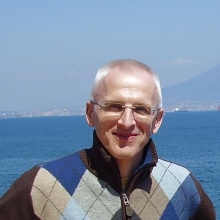We are pleased to announce that Taras Mel'nyk, professor at the National Taras Shevchenko University of Kyiv, will give the SFB 1313 "Pretty Porous Science Lecture" #29. His talk will be on "Asymptotic expansion for convection-dominated transport in a thin graph-like junction".
Date: Tuesday, 29 November 2022
Time: 4:00 pm CET
Speaker: Prof. Taras Mel'nyk, National Taras Shevchenko University of Kyiv, Ukraine
Lecture title: "Asymptotic expansion for convection-dominated transport in a thin graph-like junction"
Place: Multi Media Lab (MML), U1.003, Pfaffenwaldring 61, 70569 Stuttgart, Campus Vaihingen. If you are interested in participating in the lecture, please contact melanie.lipp@iws.uni-stuttgart.de
Abstract
We consider for a small parameter ε > 0 a parabolic convection-diffusion problem with Péclet number of order O(ε−1) in a three-dimensional graph-like junction consisting of thin curvilinear cylinders with radii of order O(ε) connected through a domain (node) of diameter O(ε). Inhomogeneous Neumann type boundary conditions, that involve convective and diffusive fluxes, are prescribed both on the lateral surfaces of the thin cylinders and the boundary of the node. The asymptotic behaviour of the solution is studied as ε → 0, i.e., when the diffusion coefficients are eliminated and the thin junction is shrunk into a three-part graph connected in a single vertex. A rigorous procedure for the construction of the complete asymptotic expansion of the solution is developed and the corresponding energetic and uniform pointwise estimates are proven. Depending on the directions of the limit convective fluxes, the corresponding limit problems (ε = 0) are derived in the form of first-order hyperbolic differential equations on the one-dimensional branches with novel gluing conditions at the vertex. These generalize the classical Kirchhoff transmission conditions and might require the solution of a three-dimensional cell-like problem associated with the vertex to account for the local geometric inhomogeneity of the node and the physical processes in the node. The talk is based on a joint work with SFB 1313 principal investigator Prof. Christian Rohde.


